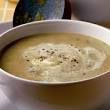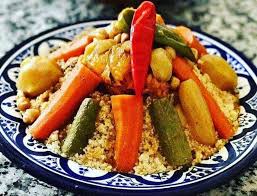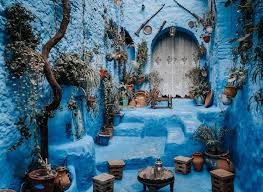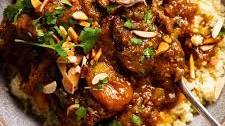The Flavours of Morocco: Exploring Famous Moroccan Food
Moroccan cuisine is a tantalising blend of vibrant flavours, aromatic spices, and diverse influences that reflect the country’s rich history and culture. From savoury tagines to sweet pastries, here are some famous Moroccan dishes that have captured the hearts and taste buds of food enthusiasts around the world.
Tagine
Tagine is perhaps the most iconic Moroccan dish, named after the earthenware pot in which it is cooked. This slow-cooked stew typically features tender meat (such as lamb or chicken), vegetables, dried fruits, and a harmonious blend of spices like cumin, cinnamon, and saffron.
Couscous
Couscous is a staple in Moroccan cuisine and is traditionally served with a flavourful stew made with meat or vegetables. The tiny steamed balls of semolina are light and fluffy, providing the perfect base for soaking up the delicious broth.
Pastilla
Pastilla is a sweet and savoury pie that combines layers of flaky pastry with a filling of shredded chicken or pigeon meat, almonds, eggs, and aromatic spices like cinnamon and powdered sugar. This unique dish showcases the intricate balance of flavours in Moroccan cooking.
Harira
Harira is a hearty soup that is often enjoyed during Ramadan to break the fast. Made with tomatoes, lentils, chickpeas, herbs, and spices, this comforting dish is both nutritious and satisfying. Harira is typically served with dates and chebakia (a sesame cookie) during iftar.
Mint Tea
No exploration of Moroccan cuisine would be complete without mentioning mint tea (known as “atay”). This refreshing beverage made from green tea leaves infused with fresh mint leaves and sugar is a symbol of hospitality in Morocco and is enjoyed throughout the day.
These are just a few examples of the diverse culinary delights that await you in Morocco. Whether you’re savouring a fragrant tagine in Marrakech’s bustling souks or enjoying sweet pastries in a traditional riad courtyard, each bite offers a taste of Morocco’s vibrant culture and warm hospitality.
Exploring Moroccan Cuisine: Answers to Common Questions About Tagine, Couscous, Pastilla, and More
- What is tagine and what are the popular variations?
- How is couscous prepared in Moroccan cuisine?
- What ingredients are typically used in a traditional pastilla?
- Can you explain the significance of harira soup during Ramadan?
- What is the proper way to prepare and serve Moroccan mint tea?
- Are there any vegetarian or vegan options for famous Moroccan dishes?
What is tagine and what are the popular variations?
Tagine is a traditional Moroccan dish named after the earthenware pot in which it is cooked. This slow-cooked stew typically features tender meat (such as lamb or chicken), vegetables, dried fruits, and a harmonious blend of spices like cumin, cinnamon, and saffron. The popularity of tagine lies in its ability to create a rich and flavourful meal that is both comforting and aromatic. Some popular variations of tagine include lamb tagine with prunes and almonds, chicken tagine with preserved lemons and olives, and vegetable tagine with chickpeas and sweet potatoes. Each variation offers a unique combination of ingredients that showcase the diverse flavours of Moroccan cuisine.
How is couscous prepared in Moroccan cuisine?
In Moroccan cuisine, couscous is prepared with meticulous care and attention to detail, reflecting the country’s culinary traditions. The process begins by steaming tiny grains of semolina, which are then fluffed up to create light and fluffy couscous. This staple dish is often served with a fragrant stew made from a variety of ingredients such as tender meat, vegetables, chickpeas, and a medley of aromatic spices like cumin and turmeric. The art of preparing couscous in Morocco involves not just cooking a meal but crafting a symphony of flavours that captivate the senses and showcase the rich tapestry of Moroccan gastronomy.
What ingredients are typically used in a traditional pastilla?
In a traditional pastilla, a famous Moroccan dish, a unique combination of ingredients is used to create its distinctive sweet and savoury flavours. The filling of a pastilla often includes shredded chicken or pigeon meat, almonds, eggs, and a blend of aromatic spices such as cinnamon and powdered sugar. This harmonious mix of ingredients, encased in layers of flaky pastry, results in a culinary masterpiece that showcases the intricate balance of flavours that define Moroccan cuisine.
Can you explain the significance of harira soup during Ramadan?
During Ramadan, the significance of Harira soup in Moroccan cuisine goes beyond being a mere dish—it holds a special place in the hearts of Moroccans as a symbol of tradition, community, and spirituality. As the sun sets and families gather to break their fast (iftar), a steaming bowl of Harira provides nourishment and comfort after a day of fasting. This hearty soup, rich in flavours from tomatoes, lentils, chickpeas, and aromatic spices, not only replenishes energy but also represents unity and sharing among loved ones. The act of preparing and serving Harira during Ramadan reflects the spirit of generosity and hospitality that defines Moroccan culture, making it an essential part of the culinary experience during this sacred month.
What is the proper way to prepare and serve Moroccan mint tea?
Preparing and serving Moroccan mint tea is a cherished tradition that involves more than just brewing a hot beverage—it is a ritual of hospitality and connection. To prepare this iconic drink, start by boiling water in a teapot and steeping green tea leaves with fresh mint sprigs. The tea is then poured into glasses from a height to create froth, a sign of quality. Sugar is added generously, but the sweetness can be adjusted to suit individual tastes. Moroccan mint tea is typically served in small, decorative glasses on a silver tray, accompanied by traditional pastries or nuts. The act of pouring and sharing this aromatic tea symbolises warmth, friendship, and welcome in Moroccan culture.
Are there any vegetarian or vegan options for famous Moroccan dishes?
In Moroccan cuisine, there are indeed delicious vegetarian and vegan options available for famous dishes. Many traditional Moroccan recipes feature an abundance of vegetables, legumes, and fragrant spices that cater to vegetarian and vegan diets. Dishes like vegetable tagine, couscous with roasted vegetables, lentil soup (harira), and chickpea stew provide a delightful array of flavours and textures without the need for meat or animal products. These plant-based adaptations of classic Moroccan fare offer a taste of the country’s culinary heritage while accommodating diverse dietary preferences.




